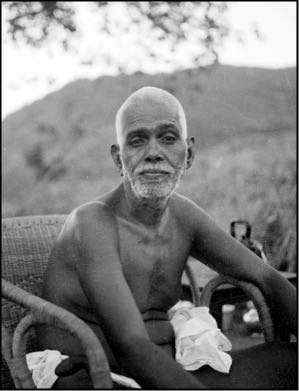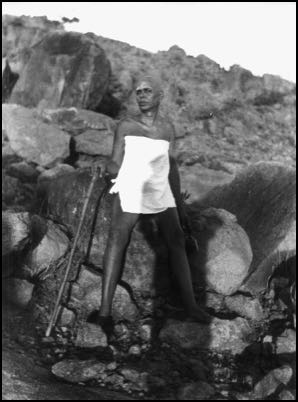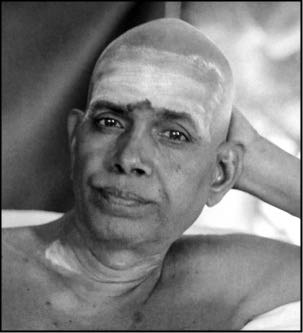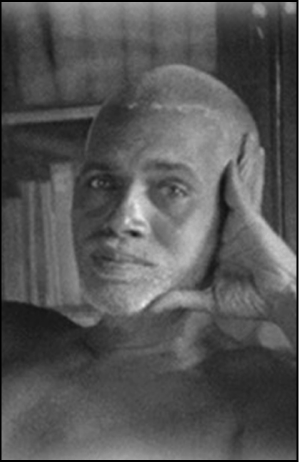



Spiritual-Teaching.org
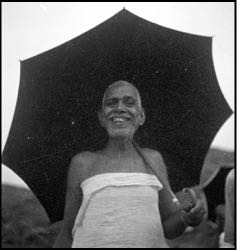
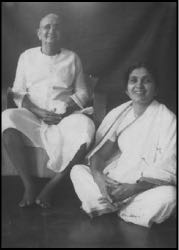
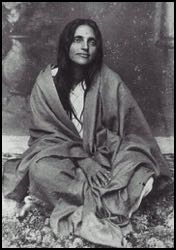
Letter # 5 - A New Beginning
“In essence, what we eat we become, what we think we become. The choice is ours whether we eat or think with discrimination or consume whatever is in front of us regardless of its impact on our well-being.”
The trauma that saw me prone on the cold floor lingered as a sobering reminder that
who I thought I was and who I really was were not the same. Scoured and somewhat
humbled I returned to the ashram with a determination to do something about my
predicament. At the least, I could sit quietly and do what others appear to be doing,
that is, sit in the Old Hall and meditate. This new type of meditation was quite foreign
to what passed for meditation in Java with its powerful psychic ambience. Here in the
spartan hall shorn of all but the necessary, meditation was quite abstract and
unyielding in its intent. There was not the possibility of a vision or a pleasant emotion.
The black cuddapah stone (slate) floor refused to relinquish its hardness and just
when one got comfortable and thoughts started to slide away into oblivion, the
occasional but inevitable mosquito made its presence felt with a sharp sting.
It was hard work and it was not possible to maintain for long any degree of
equanimity or strength of attention. Eventually just sitting quietly for an hour was an
accomplishment, never mind whether it was efficacious in curbing the thought
process. Meditation is a skill like any other and just as the athlete trains for a
marathon bit by bit, it takes determination, time, patience and renewed effort each
time one sits to build up the appropriate mental and physical muscles to prolong the
period of quietude. Usually, all one’s early efforts result in a sense of frustration. This
is normal. All one can do is persevere.
Slowly and eventually, that unique peace of mind will develop. But just as the
fresh sprig of a plant requires protection, we too need to carefully nurture the growth
of this new awareness. With the water of attention and the nourishment of undaunted
action, it will grow. Perseverance furthers.
In the Old Hall, there is the couch on which Bhagavan sat and half reclined for so
many years. There is a large-scale photograph of him stretched out reclining on the
couch with a large bolster at the back supporting his upper chest and head. He is by
then in the last years of his earthly existence and his compassionate eyes are alert
and wise. He has seen it all before, yet he is still there for us.
In those first days when I entered the Hall, I saw the photograph as a nice touch
and thought nothing more. It was only later, years later, the realisation arose that
though the photograph was an inert object, nonetheless it indicated the power of
Bhagavan’s Presence and by some mysterious alchemy that inert picture was a
gateway. From then on, I entered the Hall with considerable circumspection knowing
my every movement and thought was noticed.
The Old Hall has a unique atmosphere. The only other place in my experience
that came close to replicating it was strangely enough the chapel or cell, adjoining the
Church of St Julian in England, where the medieval anchoress, Julian of Norwich resided. 1
Each type of yoga, be it raja yoga, shabda yoga, ashtanga yoga, kundalini yoga,
bhakti yoga, all have their methods, and consequently, the results may be different.
Certainly, if say, one practices the bhakti yoga of one of the many schools of
Vaishnavism, one can gain a vision of Lord Krishna, while a person who practises
yoga techniques of the Tamil siddha tradition may find themselves encountering Lord
Murugan in a subtle vision.Broadly speaking Sri Ramana Maharshi’s yoga may be
classified as jnana yoga.
One of Sri Ramana’s disciples Lakshmana Sarma named it maha yoga in his
commentaries of Sri Ramana’s teachings. Whatever the name may be, the yoga of
Sri Ramana Maharshi is distinct.
It does have a close affiliation with the Advaita teaching of Adi Sankara, the great
proponent of Advaita who revivified Hinduism, in the eighth century CE, it is said. Sri
Ramana’s yoga differs more in the question of emphasis than metaphysical and
philosophical disparities. Sri Ramana was not interested in theorising but rather
constantly brought those who sought him out for guidance, to the concrete practice of
vichara, self-enquiry.The practice of self-enquiry starts with asking oneself, ‘Who am
I?’ There is no answer to the question in rational terms. Rather the question is meant
to focus one’s attention on who is asking the question. Who is asking the question?
By taking one’s attention back to the source of the question-thought, there is the
opportunity to hold onto that consciousness.
Perhaps for a nanosecond, one can focus on the pristine consciousness shorn of
all thought, but quickly the mind produces a stream of new persistent thoughts which
cloud one’s awareness of that pure consciousness. Again, one retrieves the attention
and takes it patiently back to that point.
By again asking the question who am I? the mind is once more brought to a halt.
But this should not be construed as chanting Who Am I? Who Am I? like a mantra.
With practice, it probably needs to be stated but once and one automatically dives
below the layer of the everyday mind factory. Those familiar with the technique know
all too well that moment when the chatter vanishes and one enters a thought-free
state. It is like entering an ocean where the water is clear and has a tranquil,
unhurried quality, and the feeling is pleasant.
At that moment of stasis, there can arise the insight that when a particular
thought, like a bubble, rises to the surface of consciousness, it is simply an objective,
impersonal thought, nothing more. In the past, we may have identified with it and said
that is mine, but now we see with the advantage of a silent thought-free moment that
we are not that passing apparition. That thought then loses its power of identification.
With each passing thought which is observed, it is seen to be other than oneself and
there slowly grows in one’s self an increased power of discrimination. With time and
patience, our centre of equilibrium is not rocked by ephemeral thoughts whose nature
is to trap our attention and eat up our energy.
Just as we clothe our bodies to keep warm or to be civilized, so too, we clothe
ourselves with a variety of thoughts and feelings which we often quite randomly
acquired because they seem to fit or were ‘given’ to us. Fashions change not only in
clothes but also in ways of attitude and expression, and we adapt to them, as well
drop those that are quaint or obsolete. We may laugh at the way people dressed in a
previous generation or we think their expressions and behaviour were primitive.
But we are much the same. Our language and expressions will change with time. And
our thoughts will change according to the prevailing winds of fashion or the zeitgeist,
the spirit of the times. In other words, thoughts are interchangeable. They are not
solid and imperishable. To get along we identify with common or acceptable thoughts.
The same occurs in our inner world. We constantly pick up thought patterns, some of
which are healthy and we like them, and some we reject as being ugly and
objectionable. There are subtle cunning thoughts that slip below the radar of our
attention and bury themselves in our unconscious. There are thoughts like viruses
which feed off our attention and make life hell.
In atma vichara meditation, we actively learn how to close the door to the
undesirable elements that cause us suffering by focusing on that pure sense of ‘I’.
In essence, what we eat we become, what we think we become. The choice is ours
whether we eat or think with discrimination or consume whatever is in front of us
regardless of its impact on our well-being.
__________________________________
1. We do not know Julian’s original name and it is accepted that it was taken from the
Church of St Julain to which her cell, now a chapel, was attached. However, Julian
was also a girl’s name in those times and may have been her Christian name.
